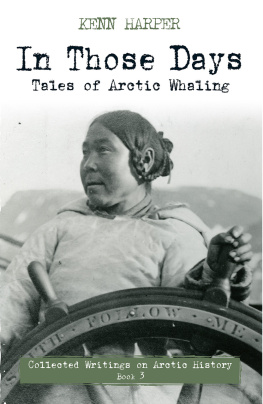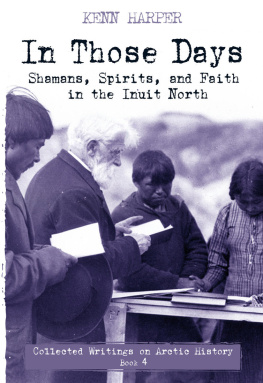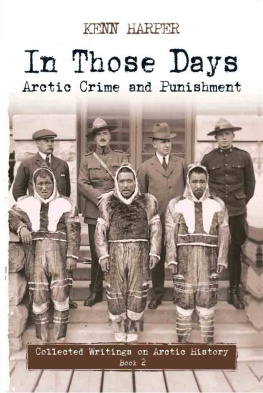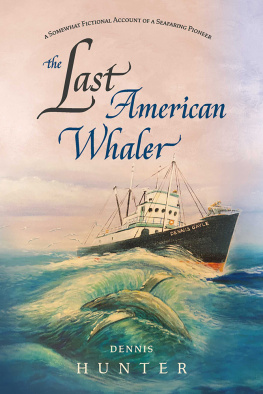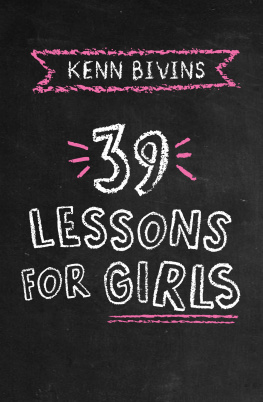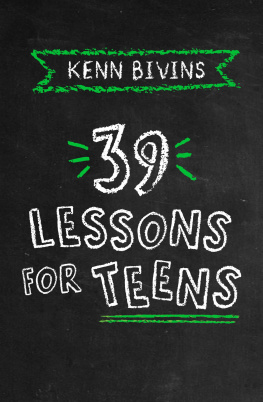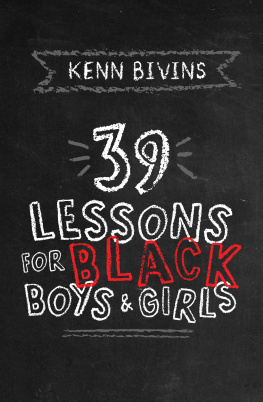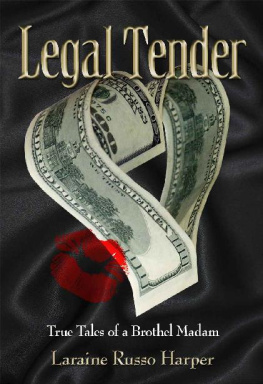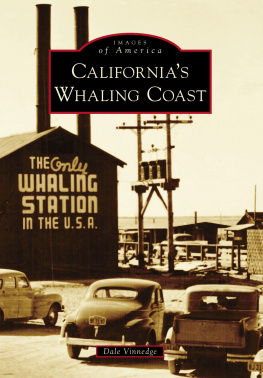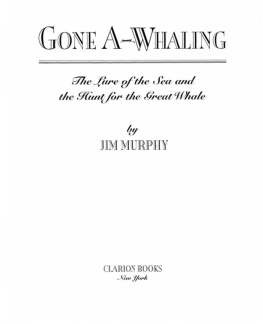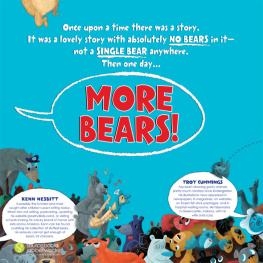Kenn Harper - In Those Days: Tales of Artic Whaling
Here you can read online Kenn Harper - In Those Days: Tales of Artic Whaling full text of the book (entire story) in english for free. Download pdf and epub, get meaning, cover and reviews about this ebook. year: 2018, publisher: Inhabit Media, genre: Adventure. Description of the work, (preface) as well as reviews are available. Best literature library LitArk.com created for fans of good reading and offers a wide selection of genres:
Romance novel
Science fiction
Adventure
Detective
Science
History
Home and family
Prose
Art
Politics
Computer
Non-fiction
Religion
Business
Children
Humor
Choose a favorite category and find really read worthwhile books. Enjoy immersion in the world of imagination, feel the emotions of the characters or learn something new for yourself, make an fascinating discovery.
- Book:In Those Days: Tales of Artic Whaling
- Author:
- Publisher:Inhabit Media
- Genre:
- Year:2018
- Rating:5 / 5
- Favourites:Add to favourites
- Your mark:
- 100
- 1
- 2
- 3
- 4
- 5
In Those Days: Tales of Artic Whaling: summary, description and annotation
We offer to read an annotation, description, summary or preface (depends on what the author of the book "In Those Days: Tales of Artic Whaling" wrote himself). If you haven't found the necessary information about the book — write in the comments, we will try to find it.
In Those Days: Tales of Artic Whaling — read online for free the complete book (whole text) full work
Below is the text of the book, divided by pages. System saving the place of the last page read, allows you to conveniently read the book "In Those Days: Tales of Artic Whaling" online for free, without having to search again every time where you left off. Put a bookmark, and you can go to the page where you finished reading at any time.
Font size:
Interval:
Bookmark:



Published by Inhabit Media Inc.
www.inhabitmedia.com
Inhabit Media Inc. (Iqaluit) P.O. Box 11125, Iqaluit, Nunavut, X0A 1H0
(Toronto) 191 Eglinton Avenue East, Suite 310, Toronto, Ontario, M4P 1K1
Design and layout copyright 2019, 2018 Inhabit Media Inc.
Text copyright 2019, 2018 by Kenn Harper
Images copyright as indicated
Design by Ksenia Sapunkova and Rafael Chimicatti
Cover image: Aulaqiaq, wife of the whaler and trader William Duval, at the helm of the wellknown Arctic ship Albert. Scott Polar Research Institute, University of Cambridge, with permission.
All rights reserved. The use of any part of this publication reproduced, transmitted in any form or by any means, electronic, mechanical, photocopying, recording, or otherwise, or stored in a retrievable system, without written consent of the publisher, is an infringement of copyright law.
This project was made possible in part by the Government of Canada.
We acknowledge the support of the Canada Council for the Arts for our publishing program.

ISBN: 978-1-77227-279-6
Table of Contents
Collected Writings
Introduction
T his is the third volume to emanate from a series of weekly articles that I wrote over a tenyear period under the title Taissumani for the Northern newspaper Nunatsiaq News. This volume presents stories of whaling, most of them from the eastern Canadian Arctic and Davis Strait. They are stories of real events, many involving Inuit and Qallunaat (white people), and often the interactions between these two very different cultures. All of the episodes can be documented from the historical record. For some, there is an extensive paper trail; for others, it is scanty. Inuit maintain some of these stories as part of their vibrant oral histories. We need to know these stories for a better understanding of the North today, and the events that made it what it is. They enhance our understanding of Northern people and contribute to our evolving appreciation of our shared history.
I lived in the Arctic for fifty years. My career has been varied; Ive been a teacher, businessman, consultant, and municipal affairs officer. I moved to the Arctic as a young man, and worked for many years in small communities in the Qikiqtaaluk (then Baffin) regionone village where I lived had a population of only thirtyfour. I also lived for two years in Qaanaaq, a community of five hundred in the remotest part of northern Greenland. Wherever I went, and whatever the job, I immersed myself in Inuktitut, the language of Inuit.
In those wonderful days before television became a staple of Northern life, I visited the elders of the communities. I listened to their stories, talked with them, and heard their perspectives on a way of life that was quickly passing.
I was also a voracious reader on all subjects Northern, and learned the standard histories of the Arctic from the usual sources. But I also sought out the lesserknown books and articles that informed me about Northern people and their stories. In the process, I became an avid book collector and writer.
Most of the stories collected in this volume originally appeared in my column, Taissumani, in Nunatsiaq News. Taissumani means long ago in Inuktitut. In colloquial English it might be glossed as in those days, which is the title of this series. The columns appeared online as well as in the print edition of the paper. So it did not come as a surprise to me to learn that I had an international readership. I know this because of the comments that readers sent me. I had initially thought of the columns as being stories for Northerners. No one was writing popular history for a Northern audience, be it indigenous or nonindigenous. I had decided that I would write history that would appeal to, and inform, Northern people. Because of where I have lived and learned, and my knowledge of Inuktitut, these stories would usually (but not always) be about the Inuit North. The fact that readers elsewhere in the world show an interest in these stories is not only personally gratifying to me, but should be satisfying to Northerners as wellthe world is interested in the Arctic.
I began writing the series in January of 2005, and temporarily ended it in January of 2015. I recommenced it three years later. I wrote about events, people, or places that relate to Arctic history. Most of the storiesfor that is what they are, and I am simply a storytellerdeal with Northern Canada, but some are set in Alaska, Greenland, or the European North. My definition of the Arctic is looseit is meant to include, in most of the geographical scope of the articles, the areas where Inuit live, and so this includes the subArctic. Sometimes I stray a little even from those boundaries. I dont like restrictions, and Nunatsiaq News gave me free rein to write about what I thought would interest its readers.
The stories are presented here substantially as they originally appeared in Taissumani, with the following cautions. Some stories that were presented in two or more parts in the original have been presented here as single stories. For some, the titles have been changed. There have been minimal changes and occasional corrections to text. I have occasionally changed punctuation in direct quotations, if changing it to a more modern and expected style results in greater clarity. A few stories are newthey have not yet appeared in Nunatsiaq News. These are included to fill gaps in the chronology or geographical scope of Northern whaling with a focus on Arctic Canada.
The chapters have been organized generally in chronological order. They are meant to be read independently.
Qujannamiik.
Kenn Harper
Ottawa, Canada
A Note on Word Choice
I nuk is a singular noun. It means, in a general sense, a person. In a specific sense, it also means one person of the group we know as Inuit, the people referred to historically as Eskimos. The plural form is Inuit.
A convention, which I follow, is developing that Inuit is the adjectival form, whether the modified noun is singular or plural; thus, an Inuit house, Inuit customs, an Inuit man, Inuit hunters.
The language spoken by Inuit in Canada is Inuktitut, although there are some regional variations to that designation. The dialect spoken in the western Kitikmeot region is Inuinnaqtun. That spoken in Labrador is called Inuktut.
The word Eskimo is not generally used today in Canada, although it is commonly used in Alaska. I use it if it is appropriate to do so in a historical context, and also in direct quotations. In these contexts, I also use the old (originally French) terms Esquimau (singular) and Esquimaux (plural).
I have generally used the historical spellings of Inuit names, sometimes because it is unclear what they are meant to be. The few exceptions are those where it is clear what an original misspelling was meant to convey, or where there are a large number of variant spellings.
Preface
T he bowhead, or Greenland, whale drew Europeans into the Arctic in the early seventeenth century, first to the waters off Spitsbergen in the North Atlantic, and then inexorably west to the waters of the Greenland Sea, Davis Strait, and Baffin Bay.
Font size:
Interval:
Bookmark:
Similar books «In Those Days: Tales of Artic Whaling»
Look at similar books to In Those Days: Tales of Artic Whaling. We have selected literature similar in name and meaning in the hope of providing readers with more options to find new, interesting, not yet read works.
Discussion, reviews of the book In Those Days: Tales of Artic Whaling and just readers' own opinions. Leave your comments, write what you think about the work, its meaning or the main characters. Specify what exactly you liked and what you didn't like, and why you think so.

